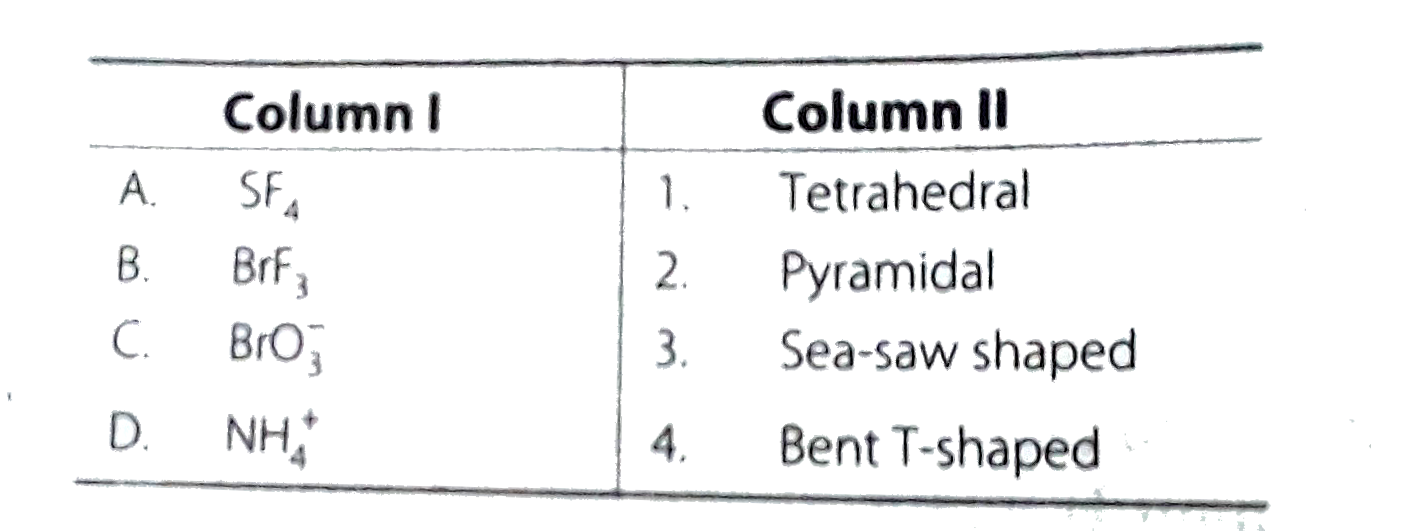Match the formulas of oxides given in Column I with the type of oxide given in Column II and mark the correct option.

A(1)B(2)C(3)D(4)
A(4)B(1)C(2)D(3)
A(3)B(2)C(4)D(1)
A(4)B(3)C(1)D(2)
The correct Answer is:B
Step by step video, text & image solution for Match the formulas of oxides given in Column I with the type of oxide given in Column II and mark the correct option. by Chemistry experts to help you in doubts & scoring excellent marks in Class 12 exams.
Related Playlists
- BOOK - PRADEEPCHAPTER - P-BLOCK ELEMENTS EXERCISE - ASSERTION AND REASON TYPE QUESTIONS6videos
P-BLOCK ELEMENTS
- BOOK - PRADEEPCHAPTER - P-BLOCK ELEMENTS EXERCISE - LONG ANSWER QUESTIONS8videos
P-BLOCK ELEMENTS
- BOOK - PRADEEPCHAPTER - P-BLOCK ELEMENTS EXERCISE - SHORT ANSWER QUESTIONS101videos
P-BLOCK ELEMENTS
- BOOK - PRADEEPCHAPTER - ORGANIC COMPOUNDS CONTAINING NITROGENEXERCISE - IMPORTANT QUESTIONS FOR BOARD EXAMINATION27videos
ORGANIC COMPOUNDS CONTAINING NITROGEN
- BOOK - PRADEEPCHAPTER - POLYMERSEXERCISE - IMPORTANT Questions (For Board Examination)27videos
POLYMERS
Similar Questions
Match the formulas of oxides given in Column I with the type of oxides given in Column II and mark the correct option.
 View Solution
View SolutionMatch the species given in Column I with the shape given in Column II and mark the correct option.
 View Solution
View SolutionMatch the species given in Column I with the shape given in Column II and mark the correct option.
 View Solution
View SolutionMatch the compounds given in Column I with the hybridisation and shape given in Column II and mark the correct option.
 View Solution
View SolutionMatch the compounds given in Column I with the hybridisation and shape given in column II and mark the correct option.
 View Solution
View SolutionMatch the compounds give in Column I with the hybridisation and shape given in Column II and mark the correct option.
 View Solution
View SolutionMatch the compounds give in Column I with the hybridisation an shape given in Column II and mark the correct option.

CodesView SolutionMatch the reactions given in Column I with the types of reactions given in Column II.
 View Solution
View SolutionMatch the reactions given in Column I with the types of reactions given in Column II.
 View Solution
View SolutionMatch the example given in Column I with the type of colloid given in Column II.
 View Solution
View Solution


